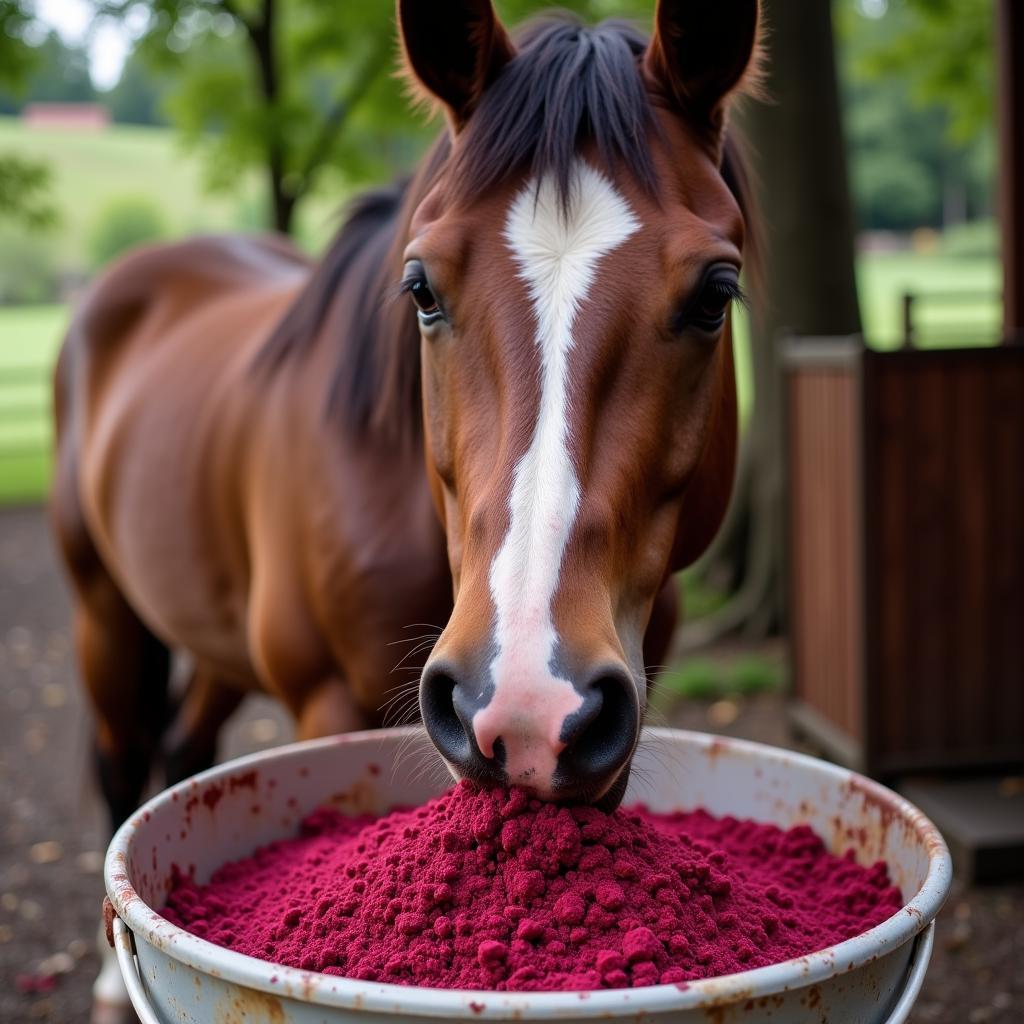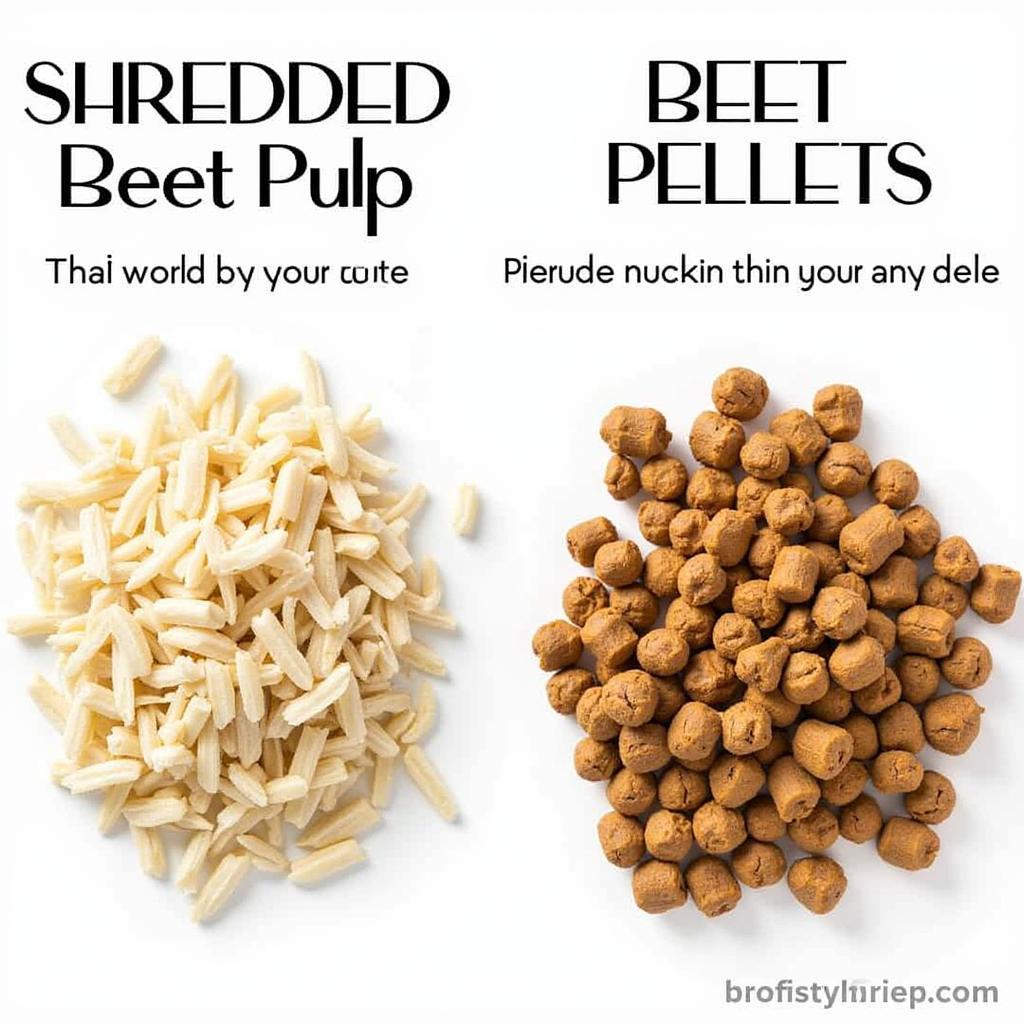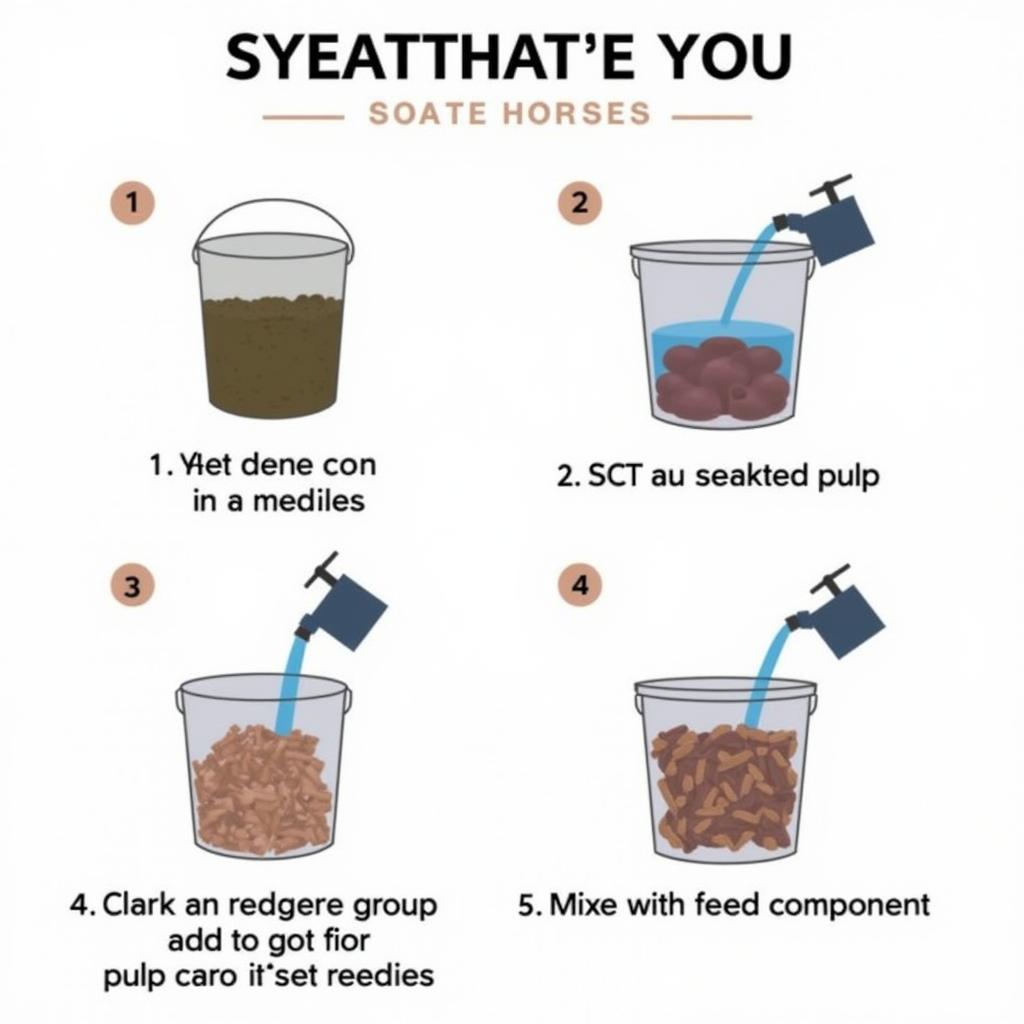Beet pulp is a popular feed supplement for horses, offering a valuable source of digestible fiber and energy. When incorporated correctly, beet pulp can contribute to a balanced diet and support your horse’s overall health. This guide explores the benefits, considerations, and step-by-step instructions on How To Feed Beet Pulp To Horses safely and effectively.
Understanding the Benefits of Beet Pulp for Horses
Derived from sugar beets, beet pulp is the fibrous material leftover after sugar extraction. Though a by-product, it retains considerable nutritional value, making it a beneficial addition to equine diets.
Here’s why horse owners turn to beet pulp:
-
High in Digestible Fiber: Beet pulp is an excellent source of digestible fiber, crucial for maintaining a healthy digestive system. Adequate fiber intake supports gut motility, prevents digestive upset, and promotes nutrient absorption.
-
Low in Sugar and Starch: Unlike many other energy-dense feeds, beet pulp is naturally low in sugar and starch. This makes it a suitable option for horses prone to metabolic issues like insulin resistance or equine Cushing’s disease.
-
Hydrating Properties: Beet pulp absorbs water readily, expanding in volume. This characteristic makes it a valuable tool for increasing water intake, particularly in horses prone to dehydration, picky drinkers, or those recovering from illness.
-
Versatile and Palatable: Horses generally find beet pulp palatable, and its versatility shines through various feeding methods. You can soak it, feed it dry, or mix it with other feeds to enhance their appeal.
 Horse Enjoying Beet Pulp
Horse Enjoying Beet Pulp
Types of Beet Pulp for Horses
When choosing beet pulp for your horse, you’ll encounter two primary forms: shredded and pelleted. Understanding their differences can help you select the most appropriate option for your horse’s needs.
-
Shredded Beet Pulp: This form resembles fluffy, shredded wood shavings. It requires soaking before feeding to enhance digestibility and prevent potential choking hazards.
-
Beet Pulp Pellets: These compact pellets are easier to handle and store. Like the shredded form, they require soaking before feeding. However, pellets typically absorb water faster due to their compressed form.
 Shredded and Pelleted Beet Pulp
Shredded and Pelleted Beet Pulp
How to Prepare Beet Pulp for Horses
Proper preparation of beet pulp is crucial to ensure your horse reaps its full benefits and avoids potential digestive issues. Follow these steps for optimal preparation:
-
Choose the Right Soaking Ratio: Use a water-to-beet pulp ratio of 2:1 or 3:1, depending on your preference and the product’s instructions. More water creates a soupier consistency, while less water results in a thicker mash.
-
Soak for Sufficient Time: Shredded beet pulp usually needs 12-24 hours to soak fully, while pellets may only require 30 minutes to a few hours. The pulp should be soft and easily mashed between your fingers when ready.
-
Drain Excess Water (Optional): While not mandatory, some horse owners prefer to drain excess water after soaking. This step can be helpful for horses on restricted water intake or those who prefer a thicker consistency.
-
Mix with Other Feeds: Beet pulp serves as an excellent carrier for supplements, medications, or other feed ingredients. Combine it with your horse’s regular feed to encourage complete consumption, especially if introducing beet pulp for the first time.
 Soaking Beet Pulp
Soaking Beet Pulp
How Much Beet Pulp Should You Feed Your Horse?
The amount of beet pulp you should feed your horse depends on several factors, including:
-
Activity Level: Horses engaged in strenuous work or training may require higher amounts of beet pulp to meet their increased energy needs.
-
Body Condition: Monitor your horse’s weight and adjust the beet pulp quantity accordingly. If you notice weight gain, reduce the amount; if weight loss occurs, consider increasing it.
-
Life Stage: Growing horses, pregnant or lactating mares, and senior horses may benefit from the easily digestible energy and hydration provided by beet pulp. Adjust the amount based on their specific needs.
Always introduce beet pulp gradually into your horse’s diet. Start with small quantities and gradually increase the amount over several days or weeks, monitoring for any digestive upset.
Beet Pulp Feeding Precautions
While generally safe and beneficial, there are a few precautions to consider when feeding beet pulp to your horse:
-
Choking Hazard (Dry Beet Pulp): Never feed dry beet pulp to horses, as it can expand in the esophagus, posing a choking hazard. Always soak it thoroughly before feeding.
-
Mold Growth: Improper storage or soaking for prolonged periods can lead to mold growth in beet pulp. Store it in a cool, dry place and discard any moldy or spoiled portions.
-
Sugar Content: While lower in sugar than many grains, beet pulp still contains some sugar. Monitor your horse’s intake, especially if they have metabolic concerns.
Conclusion
Beet pulp can be a valuable addition to your horse’s diet, offering a palatable and digestible source of fiber, energy, and hydration. By understanding the benefits, types, preparation methods, and potential precautions, you can incorporate beet pulp safely and effectively to support your equine companion’s overall health and well-being.
Remember to consult your veterinarian or equine nutritionist to determine the appropriate amount of beet pulp for your horse’s individual needs and to ensure it aligns with their overall diet and health status.
Need more personalized advice on equine nutrition and care?
Contact Justus Horses USA at 0772127271 or email us at [email protected]. Our team of experts is here to assist you 24/7! You can also visit us at QGM2+WX2, Vị Trung, Vị Thuỷ, Hậu Giang, Việt Nam.